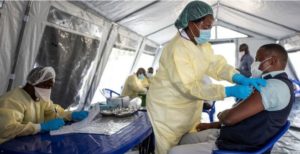Depression: Facts, statistics, and you

Sadness and grief are normal human emotions. We all have those feelings from time to time but they usually go away within a few days. Major depression, or major depressive disorder, however, is something more. It’s a diagnosable condition that’s classified as a mood disorder and can bring about long-lasting symptoms such as overwhelming sadness, low energy, loss of appetite, and a lack of interest in things that used to bring pleasure.
Left untreated, depression can lead to serious health complications, including putting your life at risk. Fortunately, there are effective treatments for depression through options like therapy, medication, diet, and exercise.
Types of depression
Specific circumstances can trigger other forms of depression or subsets of the condition.
Major depressive disorder
It’s estimated that 16.2 million adults in the United States, or 6.7 percent of American adults, have had at least one major depressive episode in a given year.
Persistent depressive disorder
You may have a single bout of major depression or you can have recurring episodes. Persistent depressive disorder, or dysthymia, is chronic low-level depression that’s lower in severity than major depression and lasts two years or longer. These ongoing feelings of deep sadness and hopelessness, in addition to other symptoms such as low energy and indecision, occurs in 1.5 percent of U.S. adults in a given year. It is more prevalent in women than men, and half of all cases are considered serious.
Bipolar disorder
Another type of depression is bipolar disorder, or manic-depressive disorder and affects about 2.8 percent of the U.S. population in a given year. It occurs equally in men and women, while 83 percent of cases are considered severe.
The disorder involves the development of a manic, or energized mood, episode. Sometimes, these may be preceded or followed by episodes of depression. The presence of these episodes is what determines which type of bipolar disorder is diagnosed.
Seasonal depression
If you have major depressive disorder with seasonal pattern, also known as seasonal affective disorder, your mood is affected by seasonal changes. The condition occurs in up to 5 percent of the U.S. population in a given year. Seasonal depression is typically triggered by the onset of autumn and lasts throughout the winter and it very rarely occurs in summer and spring.
Geography and distance from the equator play significant roles in this disorder. Women also represent 4 out of 5 people with the condition.
Postpartum depression
As much as 80 percent of new mothers experience the “baby blues” and symptoms include mood swings, sadness, and fatigue. These feelings usually pass within a week or two.
It’s caused by hormonal changes following childbirth, lack of sleep, and the pressures of taking care of a new baby. When these symptoms persist longer than a couple weeks and severity escalates, it may be a sign of a major depressive disorder with peripartum onset, also known as postpartum depression.
Additional symptoms include withdrawal, lack of appetite, and a negative train of thought. According to the American Psychological Association, about 10 to 15 percent of U.S. women have a depressive episode within three months of childbirth. One in five new mothers experience minor depressive episodes, and as many as 10 percent of new fathers may experience this condition, too.
Dr. Christina Hibbert, award-winning author and clinical psychologist, calls this “a familial disease.” Left untreated, it can be dangerous for parents and baby.
Psychotic depression
When major depression or bipolar disorder are accompanied by hallucinations, delusions, or paranoia, it’s called major depressive disorder with psychotic features. About 25 percent of patients who are admitted to a hospital due to depression actually have psychotic depression.
Prevalence of depression
The National Institute of Mental Health (NIMH) estimates that 16.2 million U.S. adults had at least one major depressive episode in 2016. This represents 6.7 percent of the U.S. adult population.
Depression is most common in ages 18 to 25 (10.9 percent) and in individuals belonging to two or more races (10.5 percent). Women are twice as likely as men to have had a depressive episode, according to the NIMH and the World Health Organization (WHO)Trusted Source. From 2013 to 2016, 10.4 percent of women were found to have depression, compared with 5.5 percent of men, according to the CDCTrusted Source.
The WHO estimates that more than 300 million people worldwide suffer from depression. It’s also the world’s leading cause of disability.
Symptoms of depression
You may have depression if feelings of sadness or emptiness don’t go away within a couple of weeks. Other emotional symptoms include: extreme irritability over seemingly minor things , anxiety and restlessness , trouble with anger management ,loss of interest in activities, including sex ,fixation on the past or on things that have gone wrong ,thoughts of death or suicide and Suicide prevention
If you think someone is at immediate risk of self-harm or hurting another person: Call your local emergency number , Stay with the person until help arrives , Remove any guns, knives, medications, or other things that may cause harm , Listen, but don’t judge, argue, threaten, or yell, If you or someone you know is considering suicide, get help from a crisis or suicide prevention hotline.
Physical symptoms include: insomnia or oversleeping ,debilitating fatigue ,increased or decreased appetite ,weight gain or loss ,difficulty concentrating or making decisions ,unexplained aches and pains
In children and adolescents, depression may cause low self-esteem and guilt, poor concentration, and frequent absence from school.
Depression may be difficult to spot in older adults. Unexplained memory loss, sleep problems, or withdrawal could be signs of depression or Alzheimer’s disease.
Online therapy can help with depression
Improve your quality of life with the support of BetterHelp’s licensed therapists. Speak to a therapist during a phone or video session and stay connected throughout your day with BetterHelp’s messaging platform.
Causes and risk factors for depression
There’s no single cause of depression. Brain chemistry, hormones, and genetics may all play a role. Other risk factors for depression include: low self-esteem , anxiety disorder, borderline personality ,disorder, post-traumatic stress disorder ,physical or sexual abuse ,chronic diseases like diabetes, multiple sclerosis, or cancer ,alcohol or drug use disorders .certain prescription medications ,family history of depression ,age, gender, race, and geography .
Diagnosing depression
If you or someone you know has symptoms of depression, your doctor can help. Make an appointment if symptoms last more than two weeks. It’s important that you report all symptoms. A physical exam and blood tests can rule out health problems that can be similar to or contribute to depression.
A diagnosis of depression usually requires symptoms to occur for two weeks or more. According to the 2013 Diagnostic and Statistical Manual of Mental Disorders, the diagnosis must also include four other changes in functioning. These may involve: disruption of sleep or eating ,lack of energy or concentration ,problems with self-image ,thoughts of suicide .
Treatment of depression
Clinical depression is treatable. Though, according to the WHO, less than 50 percent of those worldwide with depression receive treatment.
The most common treatment methods are antidepressant medications and psychological counseling. In adults with moderate to severe depression, 40 to 60 people out of 100 who took antidepressants noticed improved symptoms after six to eight weeks. This was compared with 20 to 40 people out of 100 who noticed improvement with just a placebo.
The American Psychiatric Association suggests that a combination of both antidepressants and psychological counseling is, on average, more effective. But, each treatment on their own have roughly the same effectiveness. Accessing these two treatments, however, isn’t always possible for individuals due to a number of factors such as cost and time.
According to a 2013 study, therapy had a lower rate of relapse at the one- to two-year follow-up. Psychotherapy was found to have a significantly lower rate of relapse (26.5 percent) than medications (56.6 percent). The study also found that psychotherapy had lower dropout rates than medication regimens.
If those treatments don’t work, another option is repetitive transcranial magnetic stimulation. This method uses magnetic pulses to stimulate the parts of your brain that regulate mood. Treatments are usually administered five days a week for six weeks.
Psychotherapy and medication (including vitamin D) also work for seasonal depression. This condition can also be treated with light therapy. Seasonal depression can sometimes improve on its own during the spring and summer months when daylight hours are longer.
For severe cases, electroconvulsive therapy (ECT) may be used. ECT is a procedure in which electrical currents are passed through the brain. According to the National Alliance on Mental Illness, ECT is used most often to treat depression and psychotic depression that hasn’t otherwise responded to medications.
Prolonged or chronic depression can have a devastating impact on your emotional and physical health. Untreated, it may put your life at risk. Mental Health America reports that 30 to 70 percent of those who have died by suicide have depression or bipolar disorder. Other complications of depression can lead to: alcohol or drug use disorder , headaches and other chronic aches and pains ,phobias, panic disorders, and anxiety attacks ,trouble with school or work ,family and relationship problems ,social isolation ,excess weight or obesity due to eating disorders, raising the risk for heart disease and type 2 diabetes ,self-mutilation attempted suicide or suicide. Source and image credit – healthline.com












